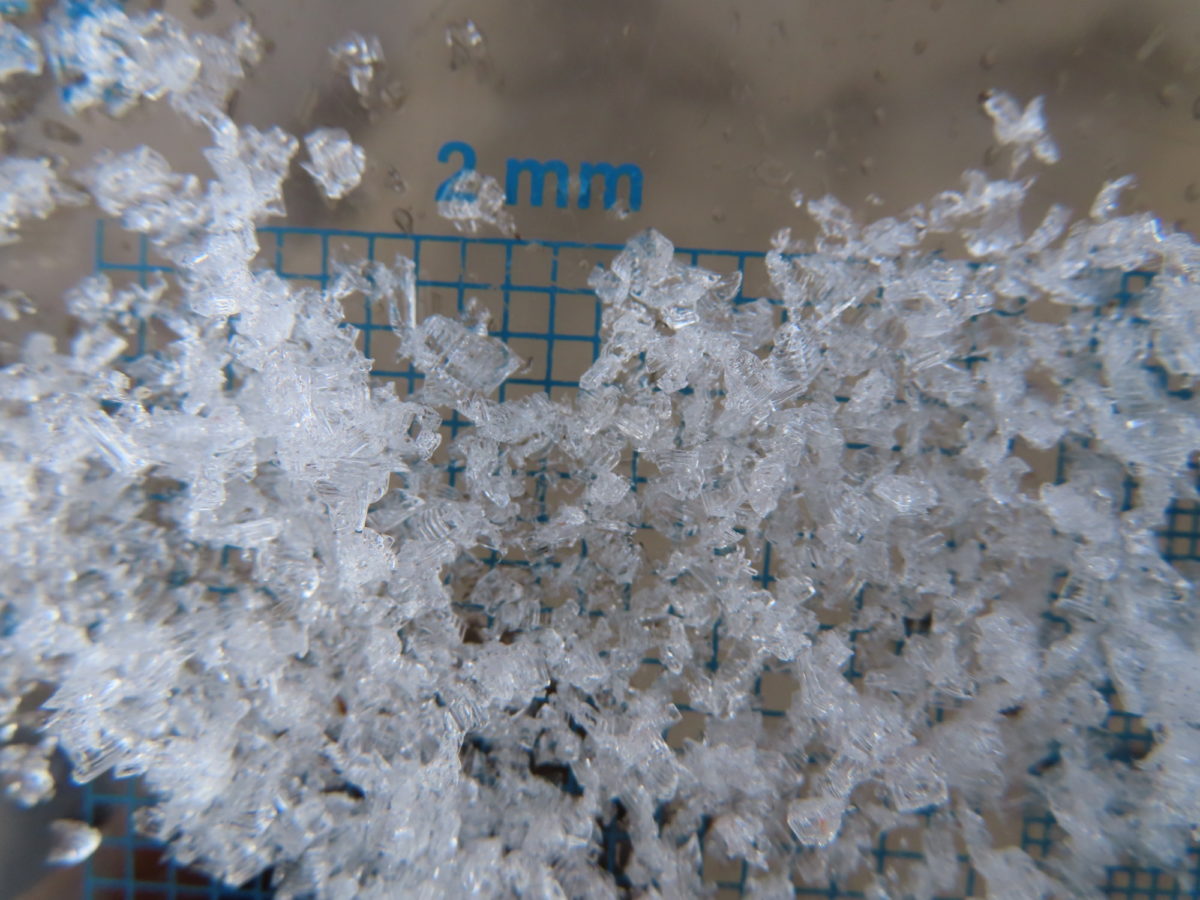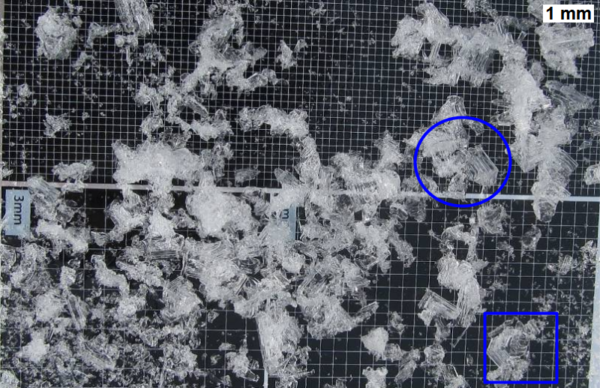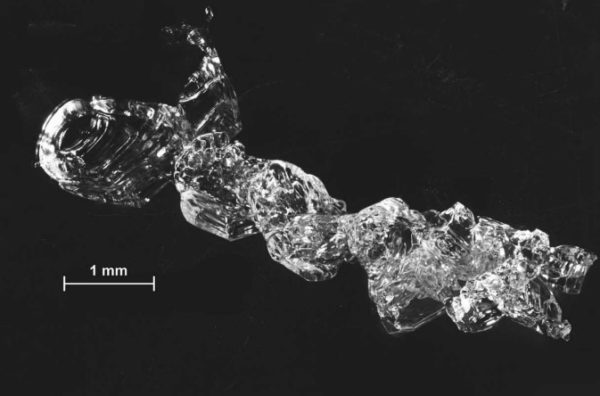A large, striated persistent weak layer that forms at the base of the snowpack.
Basal facets are a common type of persistent weak layer that forms at the base of the snowpack. As basal facets evolve into larger, more striated grains, they are called depth hoar. In its most advanced form, depth hoar can be found in chains of cup-shaped crystals up to 10 mm in size. These weak layers are frequently associated with Persistent or Deep Persistent Slab avalanches involving the entire snowpack. Depth hoar most commonly forms where the seasonal snowpack is shallow and exposed to prolonged cold temperatures, which create a strong temperature gradient from the relatively warm ground. Once formed, this layer tends to persist for a long time, often the entire season. The distribution of depth hoar may vary depending on which terrain held snow coverage during early season dry spells, most commonly on higher elevations and/or shadier aspects.
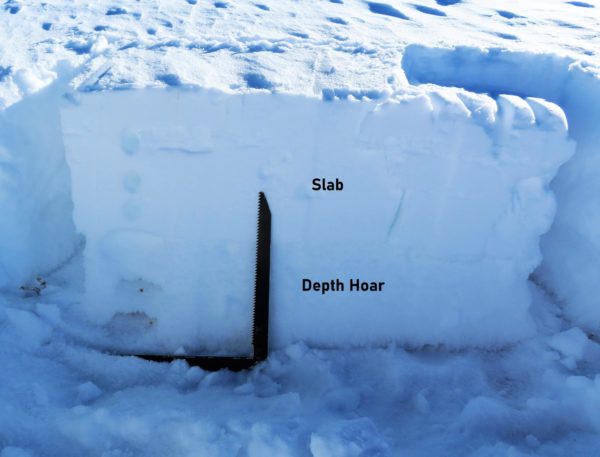
Depth hoar develops at the base of the snowpack when the seasonal snowpack is shallow. Credit: Crested Butte Avalanche Center
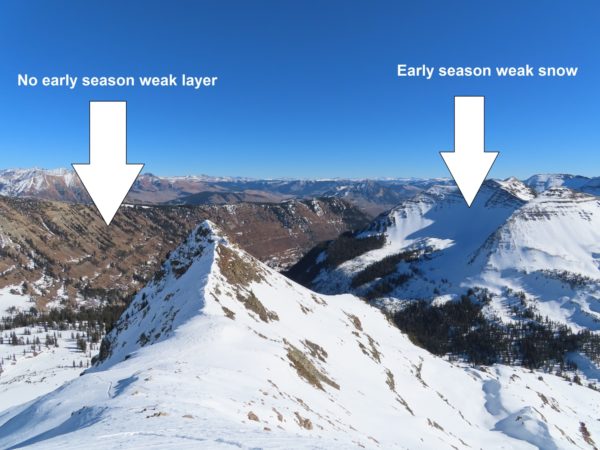
The distribution of depth hoar can vary depending on which terrain harbored shallow, early season snow coverage. Credit: Crested Butte Avalanche Center
